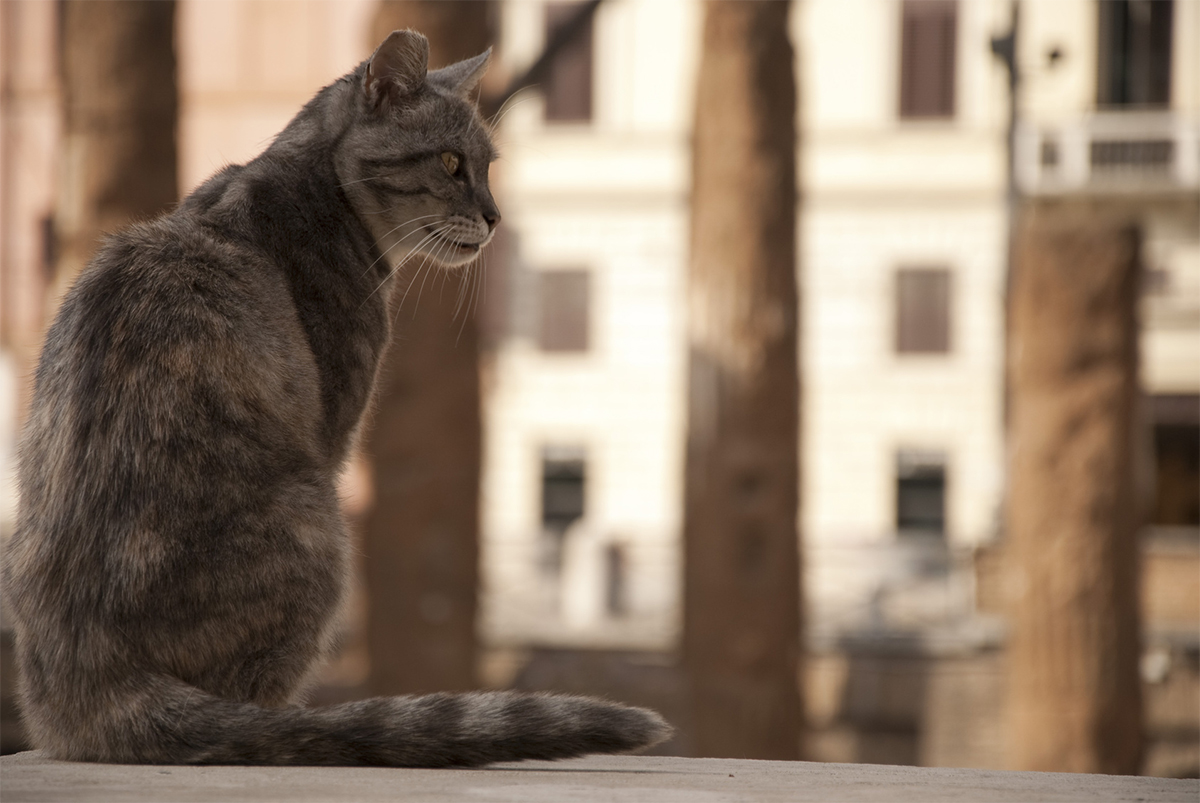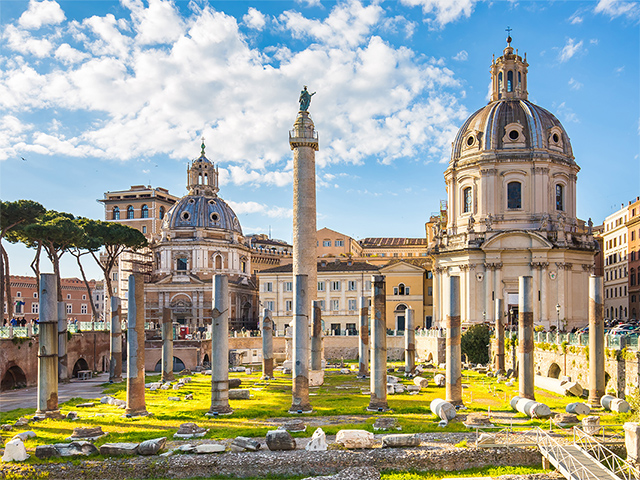Sacred Area of Largo di Torre Argentina
From the murder of Julius Caesar to the big cat community: among history and curiosities we will tell you about Largo di Torre Argentina, one of Rome's main crossroadsLargo di Torre Argentina, important junction for all tourists visiting Rome, is in the old neighbourhood of Campo Marzio close to the Pantheon, Piazza Navona and Campo de' Fiori.
I fact, many city buses ad tramways run through this square, connecting it to other main junctions and attractions: Roma Trastevere Station (tramway 8), Roma Termini Station (bus 70), Roma San Pietro Station (bus 64), Colosseum (bus 87), Trevi Fountain (bus 63), Basilica of St. Peter (bus 64 e 46) and others.
But Largo di Torre Argentina is much more than a simple transit place! Just think that it was right here, when in March 15 marzo 44 BC. emperor Julius Caesar was stabbed to death!
Are you curious? Keep reading and you'll learn more about this place.

Ruins of the Sacred Area at Largo di Torre Argentina
LARGO DI TORRE ARGENTINA: ORIGIN OF THE NAME
The square's name has nothing to do with the South American country, but refers instead to the Argentina Tower, so named by Johannes Burckardt, high prelate born in Strasbourg (Argentoratum in latin) who from 1483 was master of ceremonies of five popes, Sixtus IV, Innocent VIII, Alessandro VI Borgia, Pius III and Julius II.
Burckardt purchased a soil next to the remains of the Theater of Pompey (Via del Sudario 44) and there he built his own palace incorporating the tower. The building, italianized as Casa del Burcardo, after 1730 was in part reused to build the Theater Argentina while the tower after which the square was named, was almost completely destroyed in the XIX century.
Attention! Torre Argentina must not be confused with the tower that can be nowadays seen close to the ruins. That one is in fact the Torre del Papito, whose origin is not certain: some believe that it comes from antipope Anacletus II Pierleoni (1132-1138), nicknamed "Papetto" for his low height, other reckon the name Papito comes from Papareschi family that had it built in the 14th century.
Today, Casa del Burcardo houses the Theatre Museum SIAE, where are kept masks of the Greek, Latin and Italian theatre, eighteenth- and nineteenth-century marionettes, publishings, manifestos, pictures and costumes of famous actors.

Temples of the Sacred Area of Torre Argentina
THE RUINS OF THE SACRED AREA OF LARGO ARGENTINA
The Sacred Area in Largo di Torre Argentina in Rome is an open air square excavation dting back to the Republican age, between the 3rd century BD and the 4th century AD. Watching these ruins, you can admire the remains of four temples:
-
Temple A, built in honor of Iuno Curritis, that is Juturna, a Water Nymph, around mid 3rd century BC and rebuilt in the 1st century.
-
Temple B, in honor to Aedes Fortunae Huiusce Diei, that is, the Temple of the Fortune of This Day, built in late 2nd century BC.
-
Temple C, dedicated to Feronia, ancient Italic goddess of fertility and Protector of forests, harvests and grain, built between the end of the 4th and the beginning of the 3rd century BC.
-
Temple D, sanctuary built in early 2nd century BC in honor to the Larum Permarinum, that is the Lares, guardian deities who protected seafarers.
Within the archeological complex, behind Temples B and C, you can see a big tuff base, formerly part of Pompey's Curia, that is, Roman Senate, where during the session of the Ides of March, on the 15 March 44 BC., Julius Caesar was stabbed to death.
THE CATS IN TORRE ARGENTINA
While you explore the Sacred Area you cannot help but notice the presence of friends with four paws perched here and there among the ruins!
The excavations of Torre Argentina, in fact, are very well-known thanks to the efforts of an association that is responsible for feeding and taking care of them.

One among the many cats in Torre Argentina
It is hardly surprising, since the love of Romans for cats dates back to a long time! The cat, in fact, in addition to being a companion of life was also considered a sacred animal.
Cult of cats got to Rome from ancient Egypt, passing through Greece. The Egyptians, in fact, venerated Bastet, the goddess from feline appearance, while for the Greeks it was goddess Artemis, also protector of pregnant women and children and Lady of the animals.
The introduction in the Roman Empire of the cult of Bastet, later identified with the goddess Isis, strengthened in Romans the cult of the cat.
In Via della Gatta, still today you can admire on a cornice of Palazzo Grazioli, the small marble statue of the cat that in the past was in the interior of the Temple of Serapis. Today in its place is the Church of Santo Stefano del Cacco, in the Pigna neighbourhood.
CURIOSITIES: In the 20th century cats of Rome were fed at the expense of the City Council with rations of tripe. Later, though, the lack of resources forced to budget cuts, and hence was coined the saying "Non c’è trippa per gatti" (literally: "There's no tripe for cats", an Italian saying close in meaning to "There's not a snowball's chance in Hell").
Miaow!
Useful information
Largo di Torre Argentina
- HOW TO GET THERE
From the Port of Civitavecchia: to reach Largo di Torre Argentina go to Civitavecchia Station and get on the first train bound for Rome. After about an hour trip, get off at Roma San Pietro Station and get bus 64 for 9 stops. Get off at C.SO VITTORIO EMANUELE/ARGENTINA and you will have arrived.
- TIMETABLES
Today all monuments are closed to visitors since they are undergoing restoration works. You will have to content yourself by watching them from the outside.



 PORT MOBILITY CIVITAVECCHIA
PORT MOBILITY CIVITAVECCHIA


















